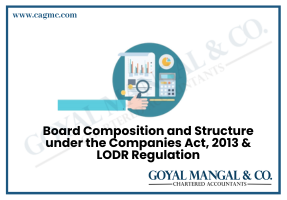 Many people invest their money in shares and forget to claim it, or many expire before they claim it. In such cases, money remains unclaimed for many years. The Ministry of Corporate Affairs (MCA) therefore introduced the Investor Education and Protection Fund (IEPF) to ensure that unclaimed shares can be transferred and received by the right person.
Many people invest their money in shares and forget to claim it, or many expire before they claim it. In such cases, money remains unclaimed for many years. The Ministry of Corporate Affairs (MCA) therefore introduced the Investor Education and Protection Fund (IEPF) to ensure that unclaimed shares can be transferred and received by the right person.
The shareholders of the company can get a refund of their unclaimed shares transferred to IEPF by the company under the provisions of Section 124 of the Companies Act, 2013, and the Investor Education and Protection Authority (Accounting, Audit, Transfer, and Refund) Rules, 2016. Let us discuss the Procedure of Recovery of Shares in India.
|
Table of Contents |
What does Recovery of Shares mean?
Even after the introduction of the Demat system, the materialization of securities remains prominent for a long time. However, some of the securities mentioned above never made it to digital form and still exist in the traditional format, i.e. physical paper. These securities can easily be compromised due to physical damage, loss, or death of the holder of the security.
Thus, the process of recovering such securities through the processes of transfer of shares, transfer of shares, acquisition of bonus issues, unclaimed dividends, etc. is known as Recovery of Shares.
Filing of unclaimed shares to recover shares from IEPF in India
A shareholder whose unclaimed dividends, debentures, shares, or debentures, demand money to be redeemed and interest thereon, if any, money received from fractional shares, etc., are transferred to the IEPF, may demand shares, etc., are transferred to The IEPF may claim shares under the procedure laid down in sub-section (6) of Section 124 or may apply under clause (a) of sub-section (3) of Section 125.
Note: If the applicant is a legal heir, successor, or assignee of a registered shareholder, before submitting an IEPF application, he must ensure to the authorities that the firm completes the transmission process 7 and issues an authorized letter to the legal heirs.
Transfer of unclaimed shares to IEPF
The company has to transfer shares where the dividend has not been claimed or paid for more than seven years to IEPF along with accrued interest. The company has to submit the details of such a transfer to the IEPF. A shareholder can get back his unclaimed shares transferred to IEPF by the company by contacting the IEPF authority which maintains the details of each account.
Who can apply to the IEPF for the return of shares?
Any shareholder whose unclaimed shares have been transferred to the IEPF may request the return of those shares by applying to the IEPF office. However, an applicant may make only one consolidated claim in respect of a company in an accounting year. The summary claim should contain data from different foils from the same company.
If the applicant is a legal heir, assignee, or successor of a registered shareholder, he should first ensure that the company completes the share transfer procedure and issues a letter of authorization before submitting the IEPF application to the authorities.
Process of recovery of share from IEPF
Step 1: Submission to the office by the applicant
An applicant who wishes to get compensation or get back shares in his name should submit Form IEPF-5 on the MCA portal. The applicant should provide the following information on the form:
- Data of the applicant (claimant).
- Information about the company from which the amount is due, including the CIN number
- Details of shares to be claimed
- Details of the amount of dividend to be claimed
- Aadhaar number if the applicant is an Indian citizen or Passport/OCI/PIO card number if the applicant is an NRI or a foreigner.
- Details of the Aadhaar-linked bank account to which the claim will be refunded
- Demat Account Number
Step 2: Submit a claim to the company
After submission of IEPF Form-5, the applicant should send a copy of the form in an envelope marked “Refund Application from IEPF” to the Nodal Officer/Registrar of the IEPF of the company with the following documents:
- A copy of the completed IEPF-5 form with the applicant’s signature
- Copy of confirmation with SRN number
- The original of the guarantee certificate with the petitioner’s signature on a non-judicial stamp paper in the amount determined under the Stamp Act
- The original pre-stamped receipt with the signature of the applicant and witnesses
- Original shares (if shares are in physical form) or copy of transaction statement (if securities are in Demat form)
- Aadhaar card
- Proof of authority i.e. shares certificate, interest order application number, etc.
- Passport, OCI (Overseas Citizen of India) card, or Person of Indian Origin (PIO) card in case of NRIs and foreigners
- Canceled check
- Copy of Master List of Demat Account Clients
Step 3: Submitting a company application to the IEPF
The company must prepare a verification report and submit it to the IEPF authorities along with the applicant’s documentation within 15 days of receiving the application form from the applicant.
Step 4: Refund from IEPF to the claimant
The IEPF authority must decide on the applicant’s request for reimbursement within 60 days of receiving the verification report from the relevant company that confirmed the applicant’s request.
The IEPF Authority will issue an order to refund the sanction once the applicant is entitled to the shares with the permission of the competent authority. The IEPF Office and the Collection and Disbursement Officer will send the bill to the Pay and Bills Payable Officer after verifying the claimant’s eligibility. The shares or extent of the claim of the claimant will be credited to the Demat account of the claimant.
Final words
Giving legitimate shareholders a chance to get their money back through the Investor Education and Protection Fund is, in our view, a very positive effort by MCA and SEBI. In addition, it is SEBI’s responsibility to educate investors and security holders. It takes a great deal of skill and experience to ensure that the share recovery process goes well and that legitimate shareholder receives their securities.







